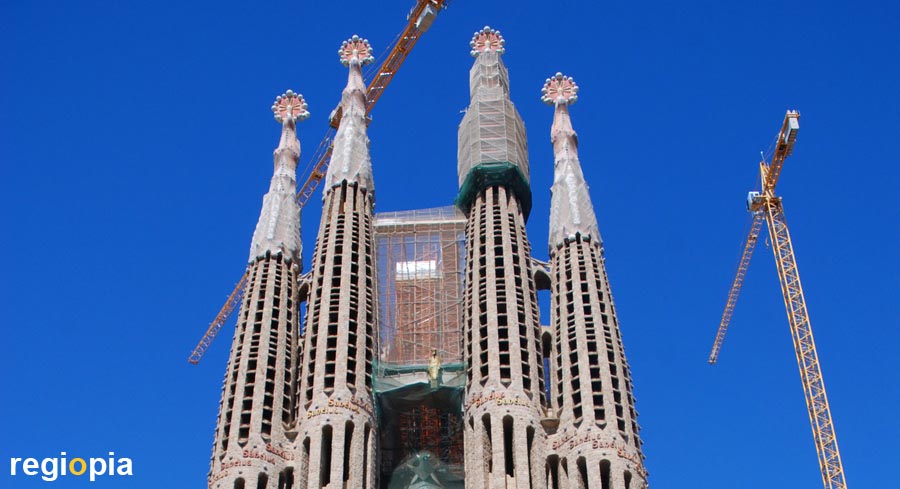
Sagrada Familia
The construction of the Sagrada Familia started in 1883. Designed by Antoni Gaudí the church is financed only by donations. After Gaudi died by an tramway accident in 1926, his assistant Sugrañes continue the construction. As Sugrañes was killed during the spanish civil war, construction stopped in 1952. The completion of Sagrada Familia is planned for 2026, the 100 anniversary of the death of Antoni Gaudí.
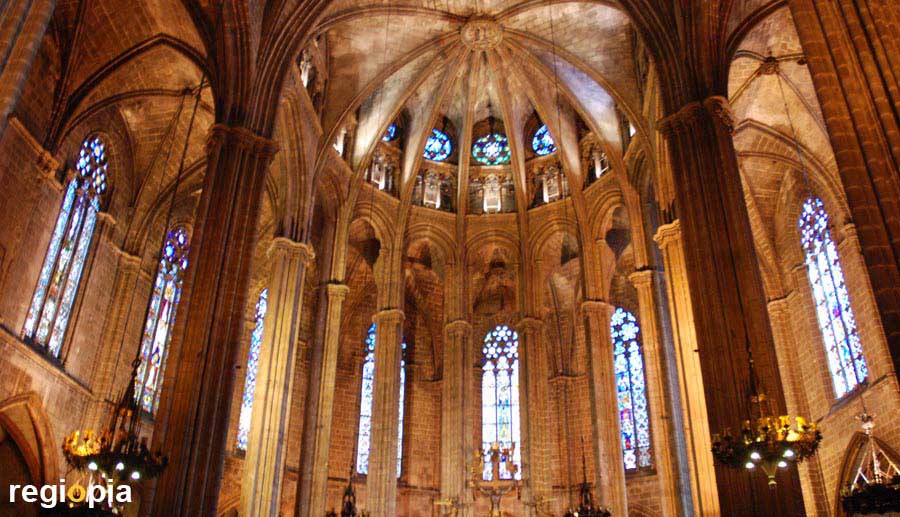
Catedral La Seu
Construction of the cathedral began in 1298, in 1448 the nave was completed. The Gothic facade was completed in 1890. The cloister with tall palm trees and a beautiful fountain is also worth a visit. Tip: From the roof of the cathedral you will have the most beautiful view over the "Barri Gotic". At the Placa de Sant lu there is a lift that leads directly to the roof top.
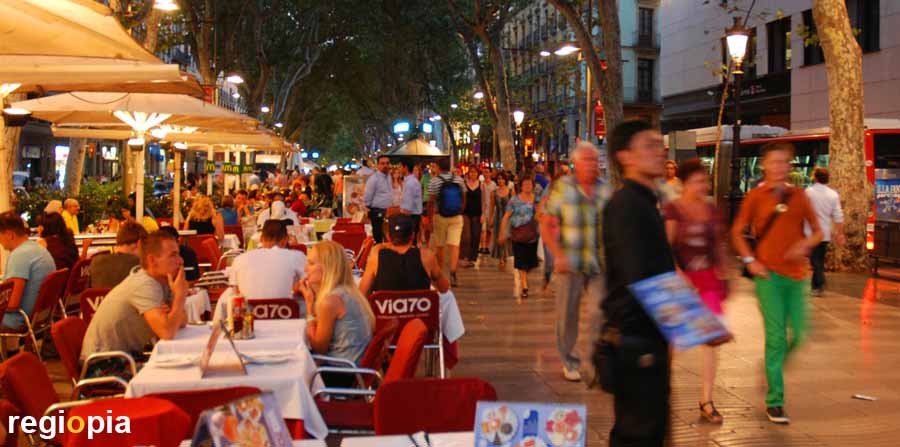
Las Ramblas
"Las Ramblas" or Les Rambles (Catalan), is a pedestrian promenade that consists of five sections. From Rambla de Canaletes at Placa de Catalunya to the Rambla de Santa Mònica at the port. On the crowded "Ramblas" there are small shops and restaurants.
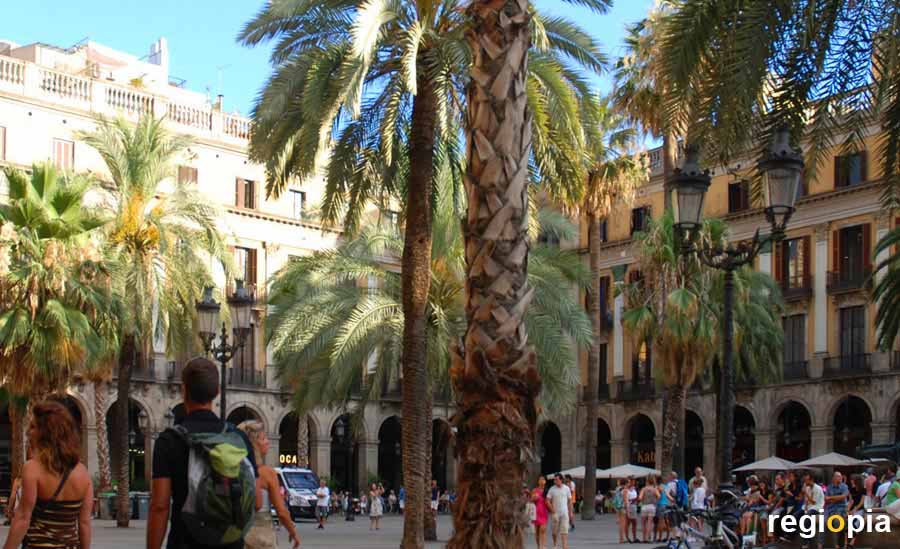
Plaça Reial
Similar to the Plaza Mayor in Madrid, the "Plaça Reial" is also a rectangular square with a homogeneous façade. The square was built in 1895 on the site of the Capuchin Order. Many cafes and restaurants have settled around the beautiful square.
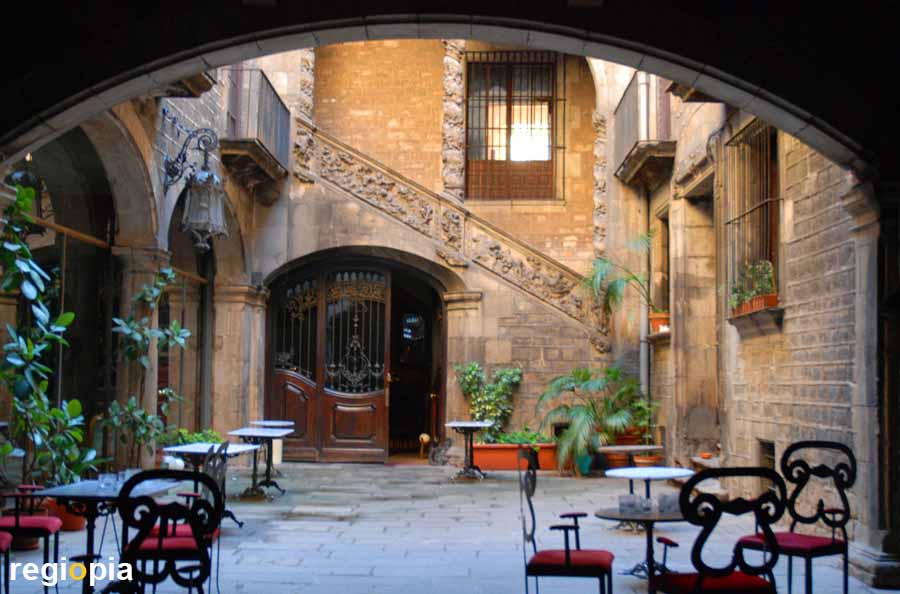
Barri Gotic
The "Barri Gotic" (Gothic Quarter) is the old town of Barcelona. There are countless small streets with lovely, nice shops and old houses with beautiful courtyards. Now and then the narrow streets open to a square with cafes and restaurants.
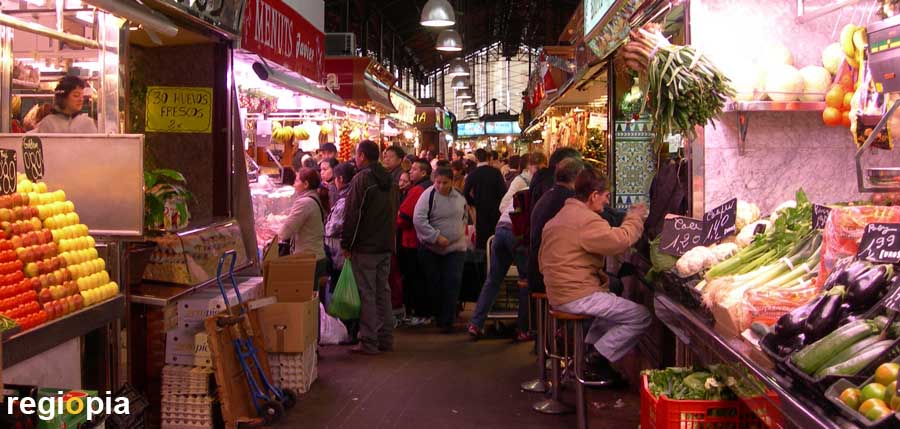
Mercat de la Boqueria
The "Mercat de la Boqueria" was built in 1840 on the site of a former monastery. The Art Deco roof, with beautiful decorations at the entrances, was built in 1914, according to the plans of Josep Mas i Vila. The market offers the finest fruits, fish, meat and vegetables. It is a pleasure for all senses to stroll through the market and try something here and there.
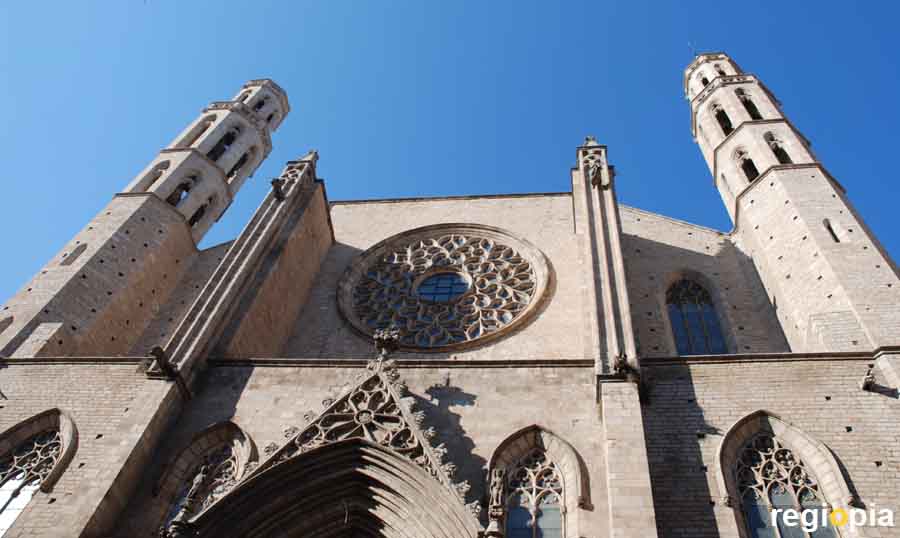
Santa Maria del Mar
Santa Maria del Mar was built between 1329 and 1370, the church looks very modest for a Gothic church. In contrast to other churches from this time, Santa Maria del Mar was built within only 40 years, so the building looks very calm and uniform. The two towers are narrow and low, they only tower a few meters above the nave. In front of the church there is a small but very nice square with cafes.
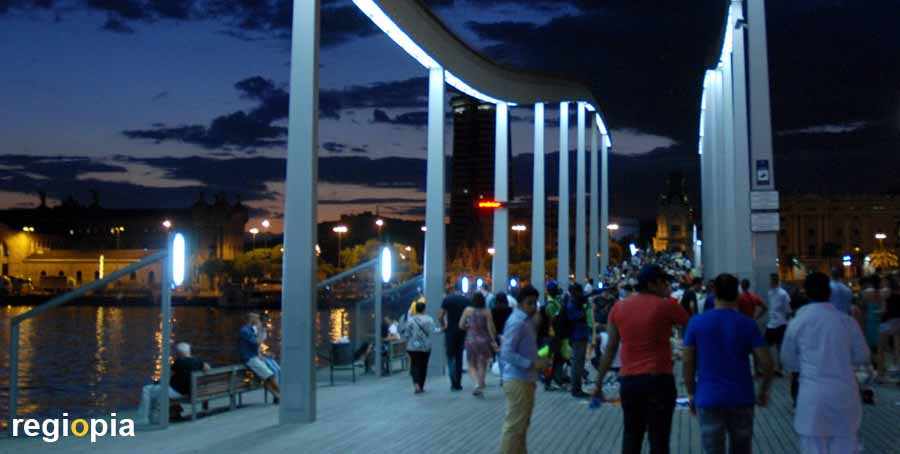
Rambla de Mar
The "Rambla de Mar" was built in 1992 as an extension of "Las Ramblas" in the port of Barcelona. It connects the city center with Port Vell (old harbour). The "Maremàgnum" shopping center and the Aquàrium of Barcelona were both built on the Moll d'Espanya, that links the Rambla de Mar with the Via Laietana.
ads
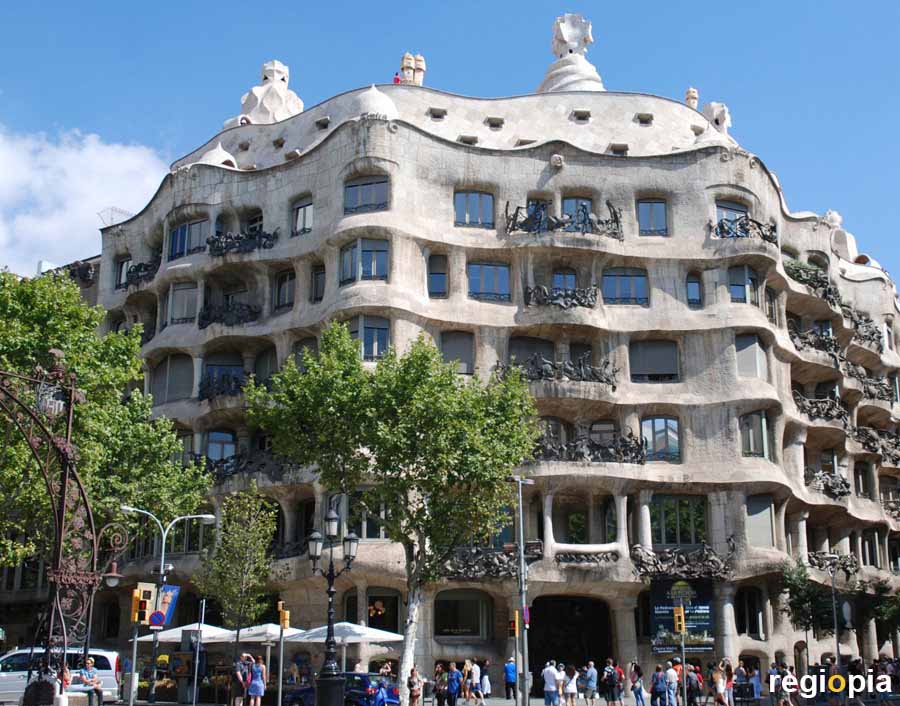
Casa Mila
The Casa Mila by architect Antonio Gaudí is also known as "La Pedrera" (the quarry). The roofscape with bizarre chimneys and ventilation shafts makes this building very special. This incredible house was built in 1910.
Passeig de Gràcia/Carrer de Provença
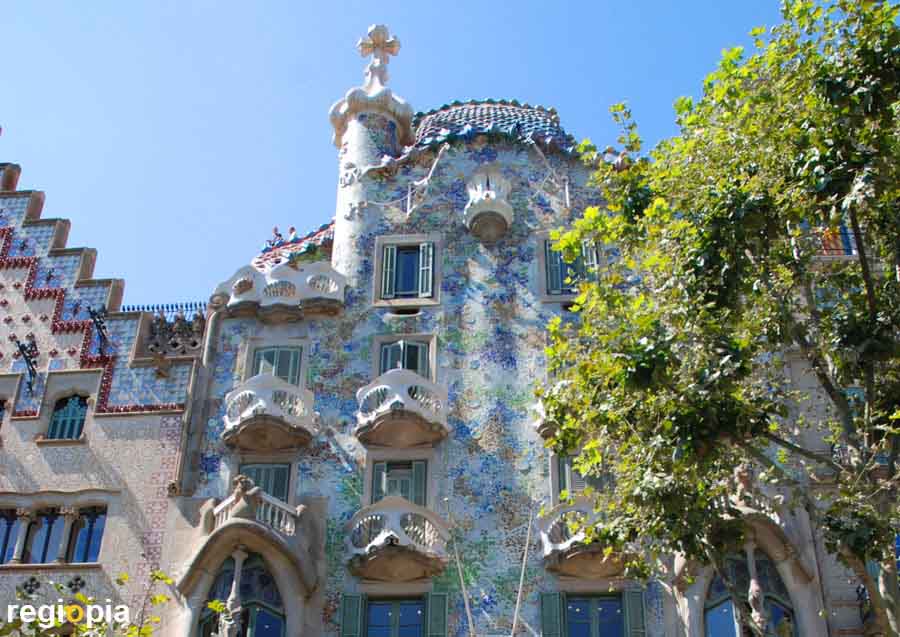
Casa Batlló
Antonio Gaudí redesigned the existing building, for the rich textile manufacturer Josep Batlló in 1906. The house evokes a mix of Art Nouveau and Wonderland. The colorful scaled roof and the cavernous entrance symbolize the history of the Dragon Slayer "Sant Jordi", the patron saint of Catalonia.
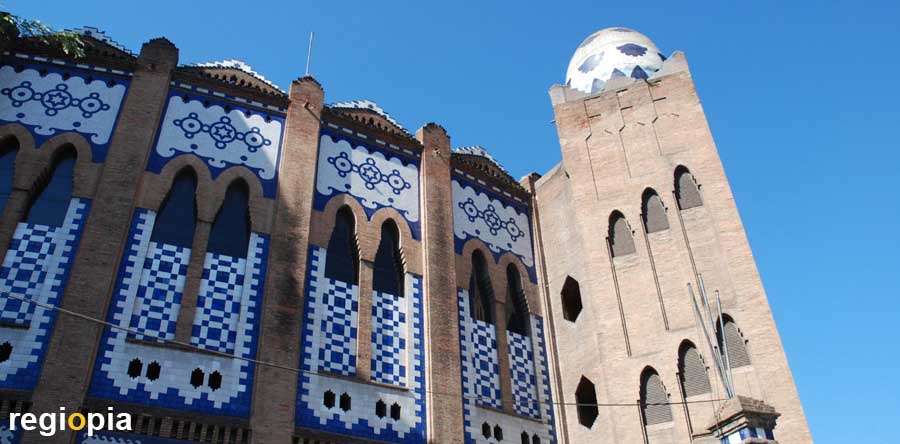
Toros Monumental
The old bullring "Toros Monumental" is looking for a new use, since the ban of bullfighting in Barcelona. The impressive building, with blue and white tiles has is a relic of the past since 2012.
Gran Via de les Corts Catalanes
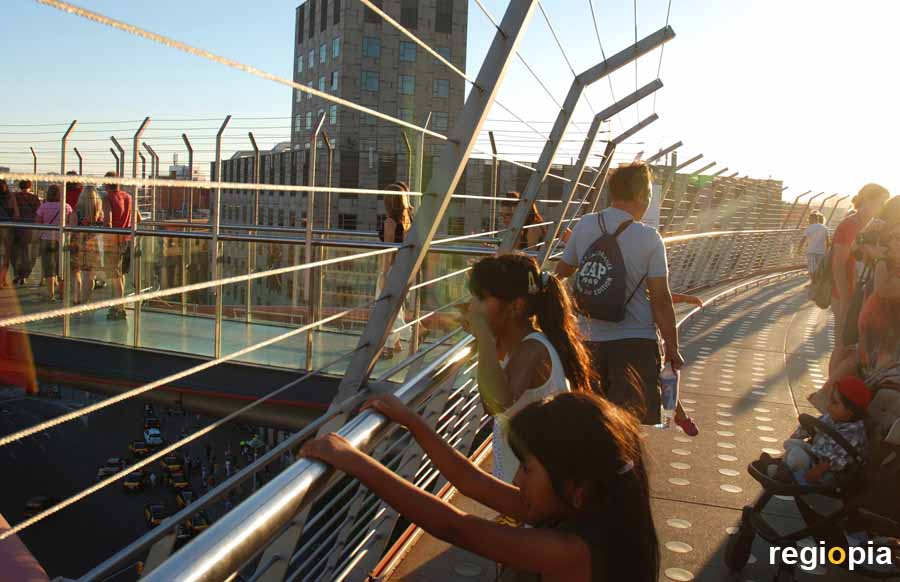
Arenas de Barcelona
The former bullring "Las Arenas" was converted into a mall by british architect Richard Rogers. On the roof there are restaurants and a surrounding observation platform, that can be accessed via a lift at Placa Espanya.
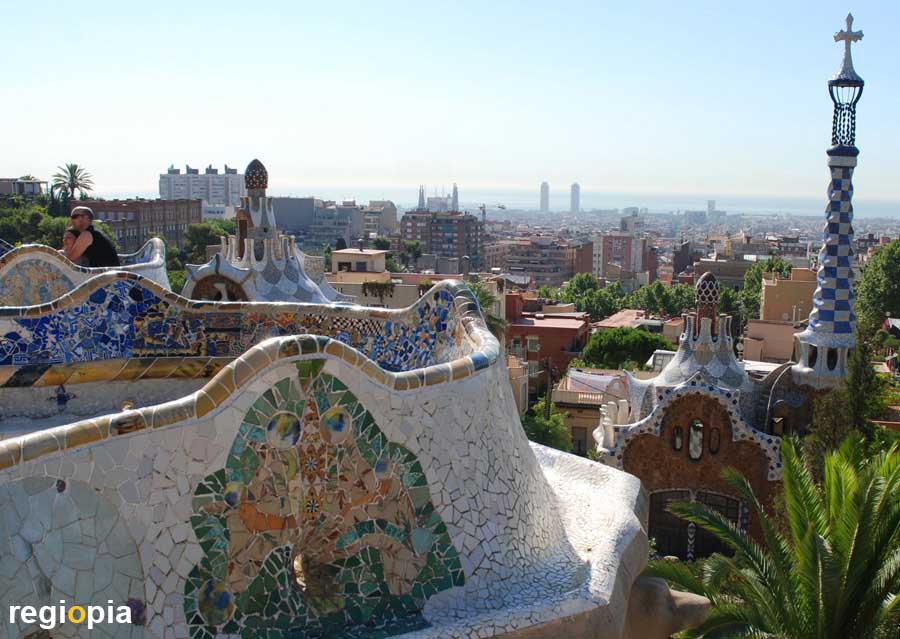
Park Güell
The entrepreneur Güell planned to built a high class residential garden city on top of the hill and commissioned Gaudi as architect. Gaudi built a colorful, meandering balcony with a great view over the city and the entrance building. The First World War and the following World Financial Crisis terminated the project. Park Güell is now a World Heritage Site.
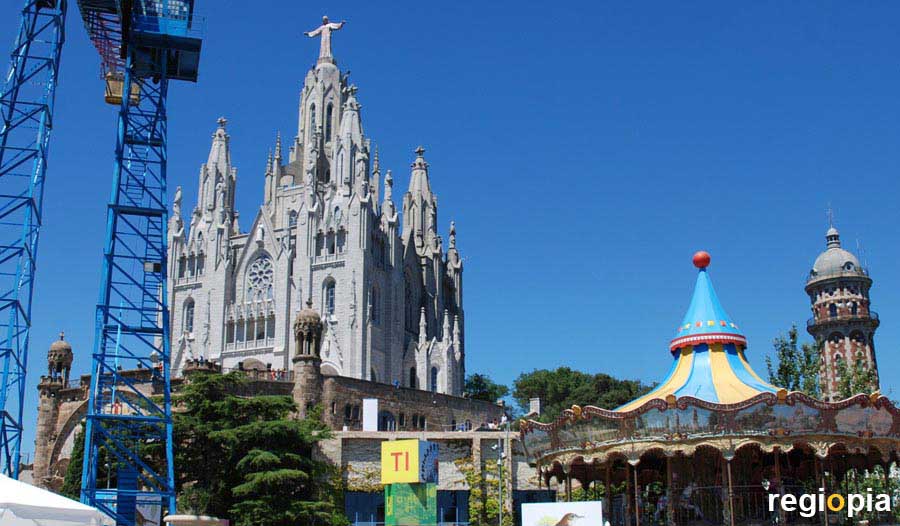
Tibidabo
The Tibidabo is a 512 m high mountain in the west of Barcelona. On the top there is an amusement park with historical rides, the church Sagrat Cor (Sacred Heart) and restaurants. The "Funicular de Tibidabo" will take you on the hill top, with a great view on Barcelona.
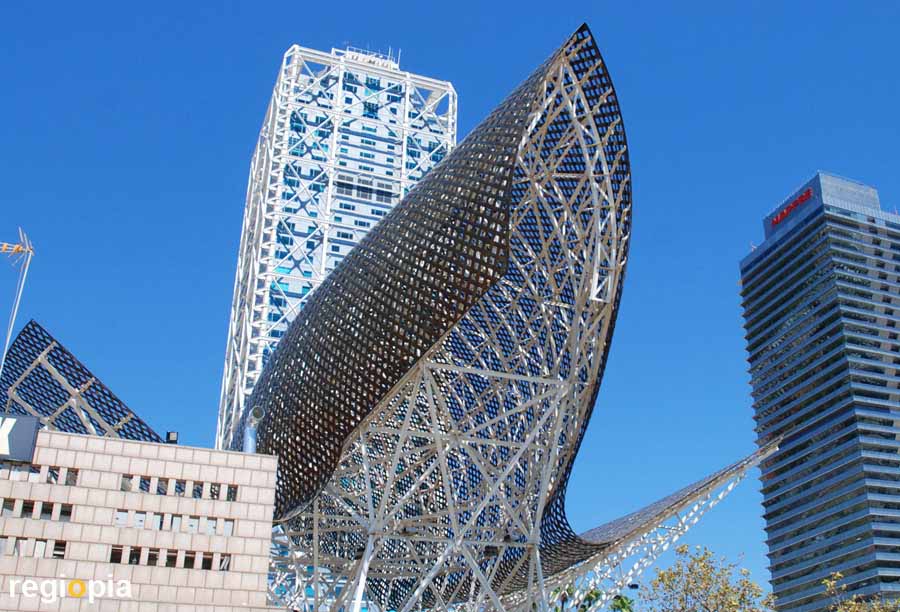
El peix d'or
The fish sculpture by american architect Frank O. Gehry is the trademark of the "Port Olimpic". The marina and the two skyscrapers were built for the Olimpic Games in 1992. Many excelent restaurants have made the Olympic Harbor a popular spot for night owls.
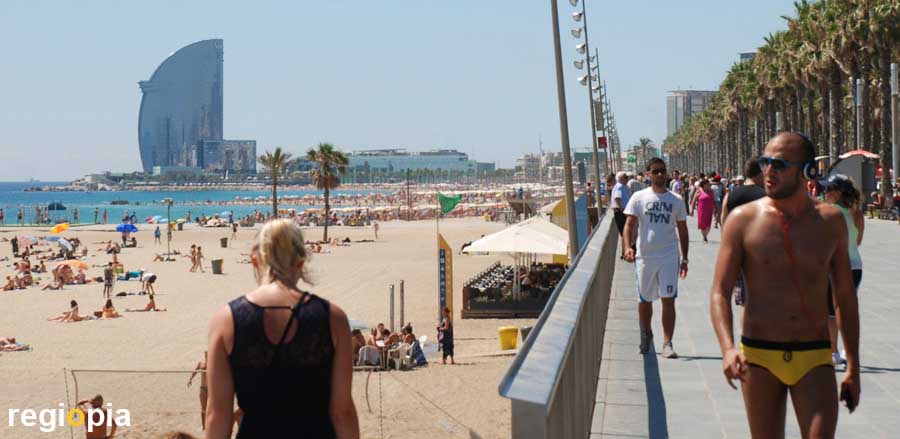
Platja de la Barceloneta
The beach promenade of "Barceloneta" was redesigned for the Olympic Games in 1992. The impoverished Barceloneta has become a popular tourist destination. The beaches of Barceloneta are one reason for the touristic success of Barcelona.
Map Barcelona attractions
ads
Travel Guide Barcelona
Welcome in Barcelona
Barcelona is one of the top city break destinations. The city offers everything you expect for a great vacation. Barcelona offers good weather and with the Platja de Barceloneta a long, wide sandy beach. Montjuic and the Tibidabo are two mountains close to the city center. Barcelona has a well-preserved historic old town, many nice shops, architectural icons such as the German Pavilion, famous sights and great museums such as the Picasso Museum or the Miro Museum.
ads
Antonio Gaudi
No other architect has shaped Barcelona like Antonio Gaudi. The Catalan architect is the most famous representative of "Modernismo", as Art Nouveau is called in Spain. Between 1883 and 1926 he designed numerous buildings in Barcelona and other Spanish cities. His most famous buildings include the houses "Casa Batllo" and "Casa Mila", Park Güell and of course the cathedral "Sagrada Familia" which is still being built.
ads


